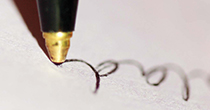Fiction to Function: Stories That Heal
by Catherine Milos

Stories are medicine.
—Clarissa Pinkola Estes
Our lives are filled with challenges, changes, and problems to be solved. These difficulties can become great crucibles, when we get stuck thinking or feeling. Perhaps, like me, you are faced with an event so traumatic that your mind and body relive it in the attempt to process and solve and prevent. When you are thinking and feeling and reliving, sometimes you get caught in an unhealthy cycle too close to the issue and can’t move forward.
As a form of escape, my young self took up story making. I turned people, problems, and events in my life into dragons, magicians and mermaids, castles, oceans, and valleys. I turned problems into journeys and fairytales. And you know what? It helped me to heal. Most of all, the process of fictionalizing gave me a new perspective. One where I could escape a tumult of thoughts and emotions, create order, and find solutions. One where I began to see stories everywhere and that led me to my passion for writing. It wasn’t until recently, I discovered that many native traditions, spiritualities, religions, therapists, and counsellors often use similar techniques in their practice to inspire growth and promote healing.
Creating stories is an act of mindfulness.
Focus on the task at hand and accept
without judgment what you create.
Creating stories may come easily to you, or it may be a struggle. But hopefully, I can guide you through a few steps to get your creative mind working and help you on your path to health and balance.
First things first—embrace your imagination. These stories are your own creations. They don’t have to be shared with anyone; they don’t have to be “good” or accurate. They don’t have to be written, they can be drawn, or just imagined. They can be stick people, they can be bullet points. They are a way for you to remove yourself from the situation and imagine it from multiple perspectives.
Creating stories is an act of mindfulness. Focus on the task at hand and accept without judgment what you create. Make sure you have a few minutes to brainstorm and create quietly and uninterrupted. Maybe during a coffee break, late at night when you can’t sleep, early in the morning, or even while you are in the bathroom.
You need a character or maybe two or three. These characters should have differing personalities and can have strange ideas about the world. Writers often use stock characters, or characters that they can continuously rename, reuse, or rewrite. For example, you can most likely recognize the superhero, the villain, or the damsel in books, movies, and other stories you encounter. Try creating your own stock of characters. You can also turn animals or inanimate objects into characters. Maybe you have a favourite type of tree or a pet that would work well.
Next you need a problem to solve or place to go. How do they get there? What type of solutions might a pirate come up with as opposed to the class-clown, hero, or villain? Imagine how your characters might react—how would lettuce negotiate with the rabbit that is consuming it?
To be a story, you must start and end. But you don’t have to start at the beginning or end with a solution. It could start in the middle and you could discover, as I have, that perhaps the only solution is there is no solution and the issue should just be left alone or left behind.
This is your healing journey; be gentle with yourself. Often we can be the worst critics of our selves. This isn’t something you have to do, have to do well, or have to do a certain way. This could be a need for you, a desire, or simply a curiosity to create a story. Treat it like it is just something to do. The less you expect of yourself, the more open and creative you may become. And here is a trick I have discovered over the years. Our minds naturally create stories about what we are doing, what happens to us, what the weather is like, coming up with whys, could-haves, should-haves, and what-ifs. It’s like fighting fire with fire, except with stories.
What stories can you come up with? What stories has your mind already created? Have fun with the process and don’t forget to infuse a little humour into every tale. And if you feel comfortable, maybe invite others into your story-making process. Make a family night of starting and finishing each other’s stories. Children are amazing at adding twists and turns and new characters to a tale and they infuse child-like humour into many fictitious encounters. You’ll be surprised what you uncover and learn!
Catherine Milos, BA, is a writer from Regina who lives with her three rescue cats and husband. She is an environmentalist, feminist, intuitive practitioner, and believes in “walking the peaceful walk” when it comes to activism. |
